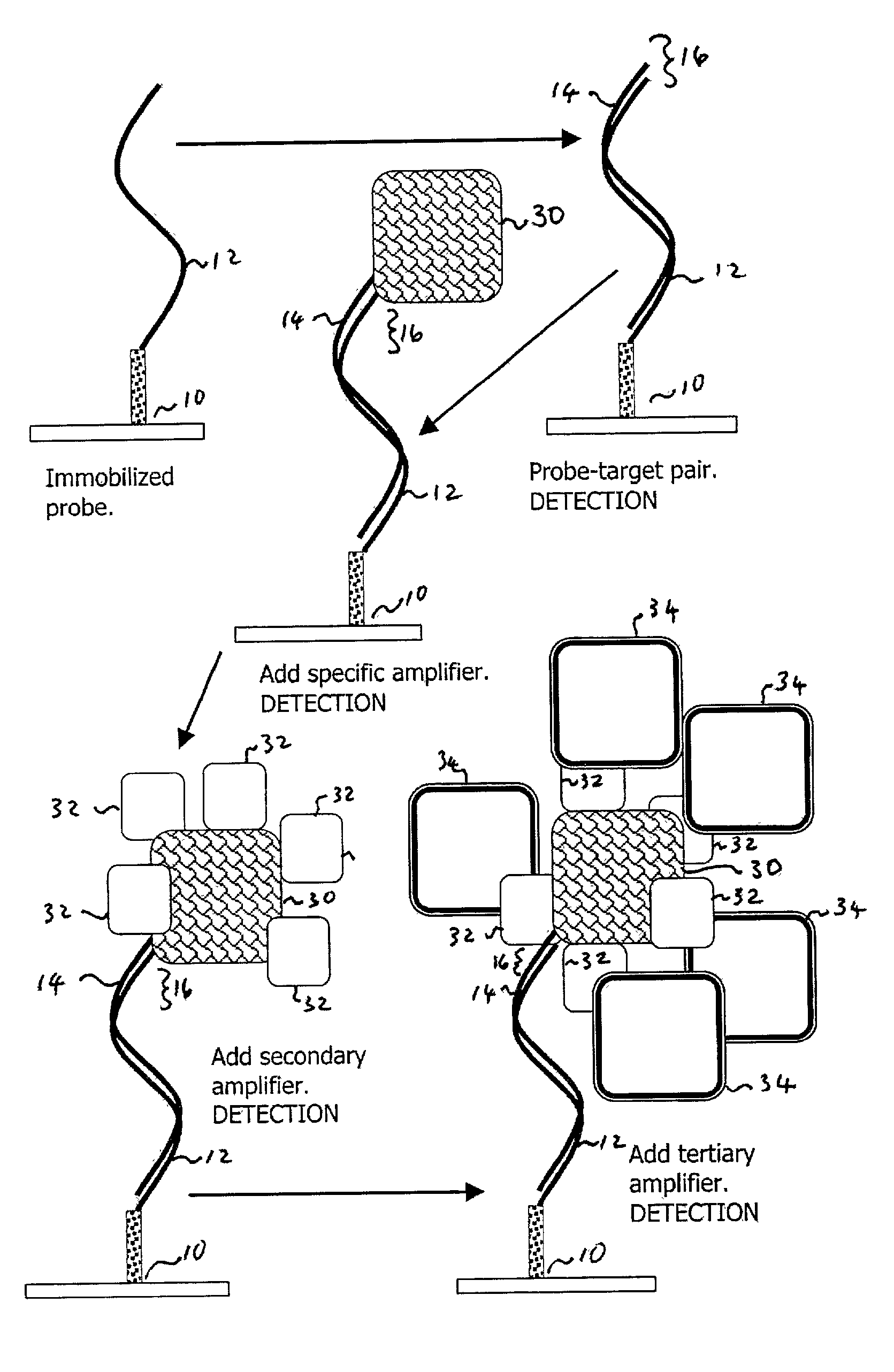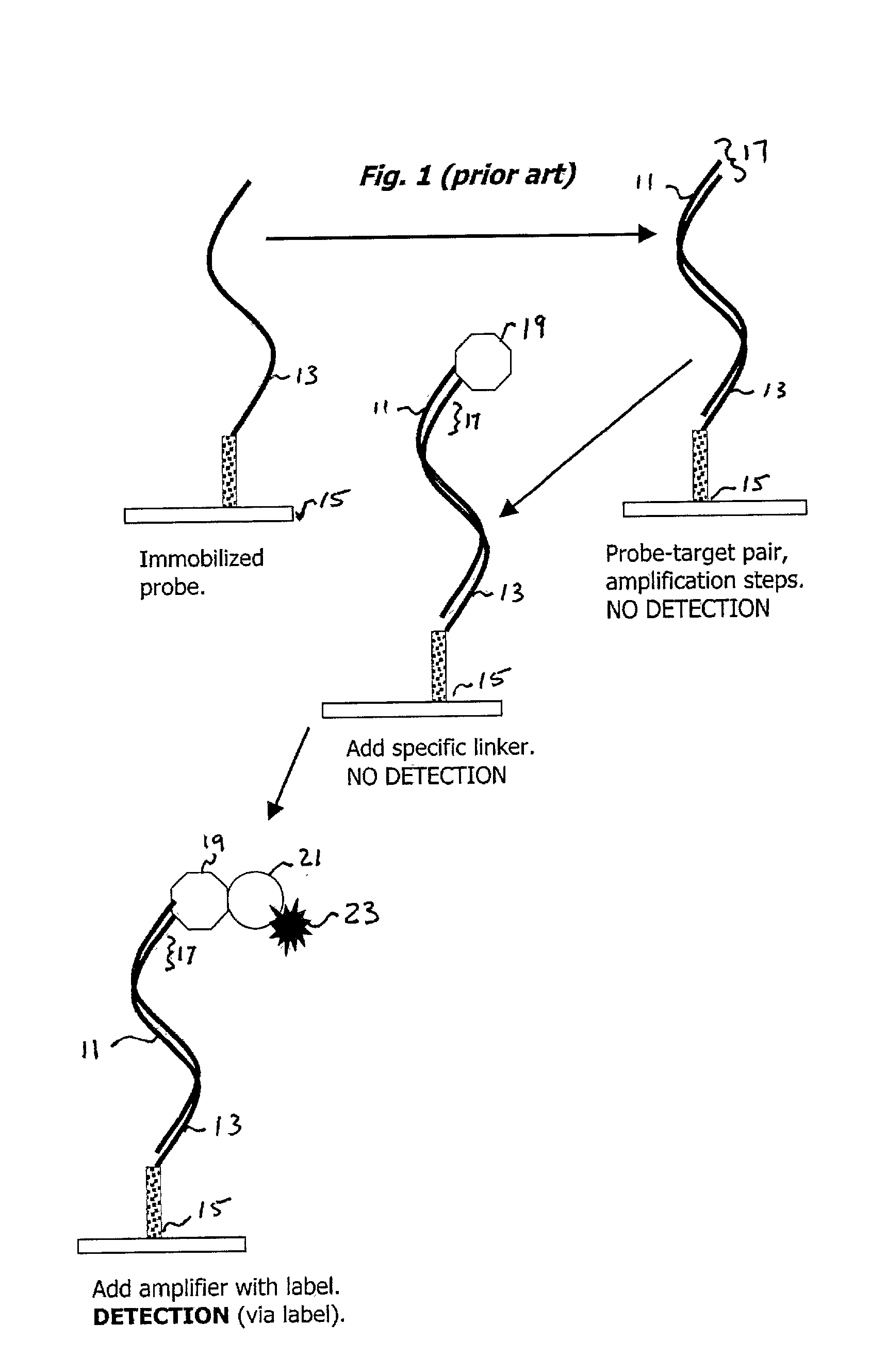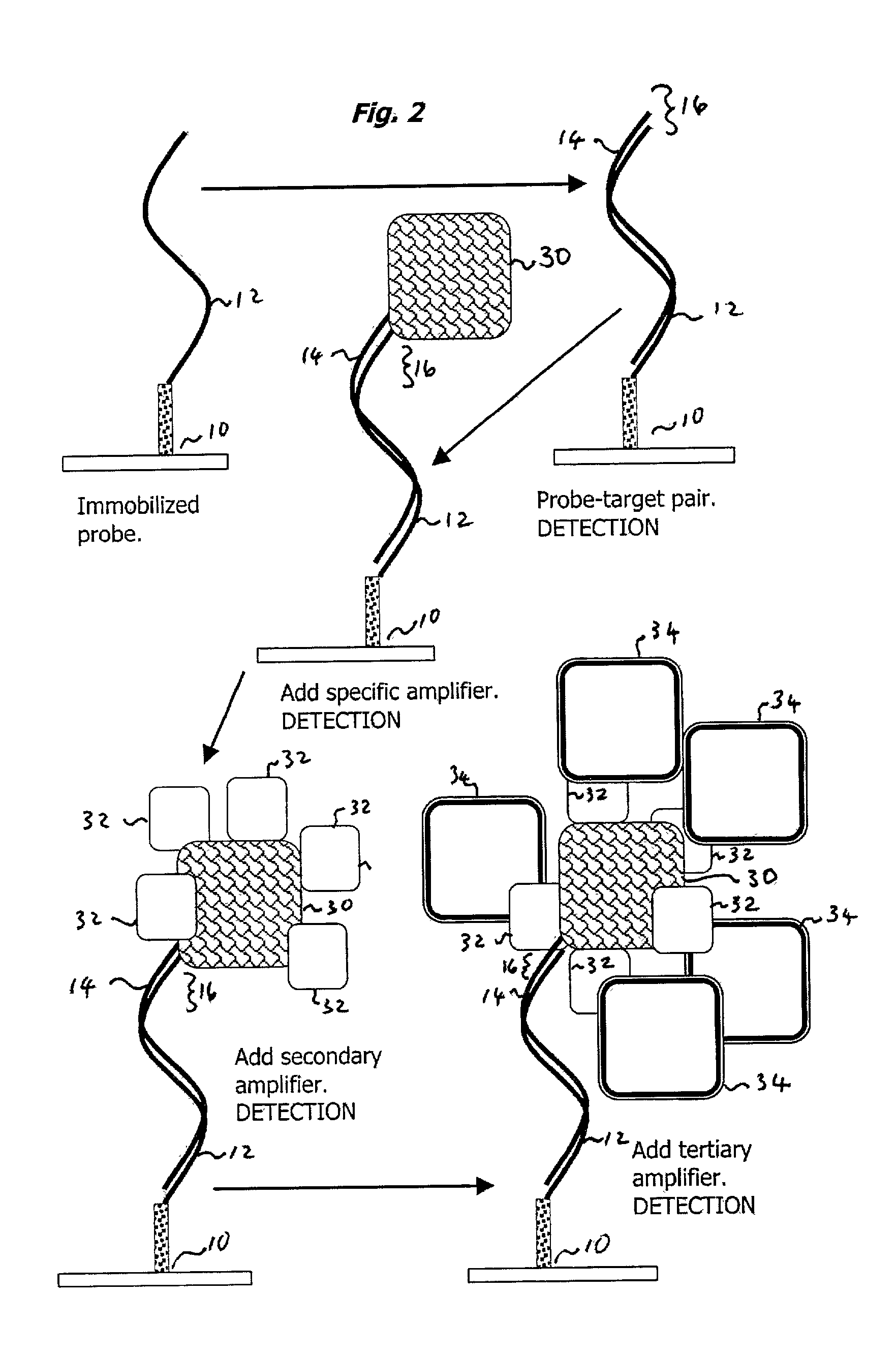Method and apparatus for recognizing molecular compounds
a molecular compound and molecular structure technology, applied in the field of methods and apparatus for detecting, qualitatively and quantitatively, molecular interaction, can solve the problems of large volume and bulk, high cost, and high cost of high-sensitivity techniques
- Summary
- Abstract
- Description
- Claims
- Application Information
AI Technical Summary
Benefits of technology
Problems solved by technology
Method used
Image
Examples
Embodiment Construction
Oligonucleotide Probe and Target; IgM Primary Amplifying Body
[0043] One area in which the present invention is useful is with the dry state surface scanning detection of an oligonucleotide probe-target pair on an aldehyde derivatized glass substrate. The process entails the following steps:
[0044] Clean a Superaldehyde (Telechem International) slide using a nitrogen stream;
[0045] Using a Tris-EDTA-NaCl buffer ("TE-NaCl buffer"), spot a 30 mer oligonucleotide modified with C6 amino at 3' end to the slide surface to act as a probe.
[0046] Dry the probe for 12 hours at room temperature (25.degree. C.) and <30% relative humidity.
[0047] Rinse the substrate twice with vigorous agitation in 0.2% SDS (sodium dodecyl sulfate) for two minutes to remove unbound oligonucleotides (DNA).
[0048] Rinse the substrate once with vigorous agitation in double distilled water (ddH2O) for two minutes.
[0049] Dry the substrate with a nitrogen stream.
[0050] Prepare a fresh sodium borohydride solution by dissolv...
PUM
| Property | Measurement | Unit |
|---|---|---|
| Volume | aaaaa | aaaaa |
| Nanoscale particle size | aaaaa | aaaaa |
| Nanoscale particle size | aaaaa | aaaaa |
Abstract
Description
Claims
Application Information
 Login to View More
Login to View More - R&D
- Intellectual Property
- Life Sciences
- Materials
- Tech Scout
- Unparalleled Data Quality
- Higher Quality Content
- 60% Fewer Hallucinations
Browse by: Latest US Patents, China's latest patents, Technical Efficacy Thesaurus, Application Domain, Technology Topic, Popular Technical Reports.
© 2025 PatSnap. All rights reserved.Legal|Privacy policy|Modern Slavery Act Transparency Statement|Sitemap|About US| Contact US: help@patsnap.com



